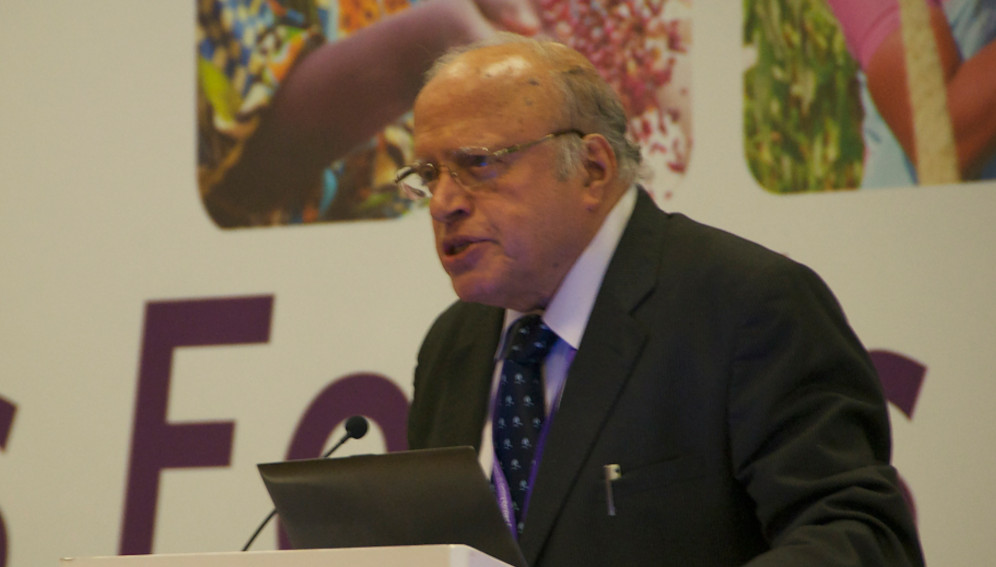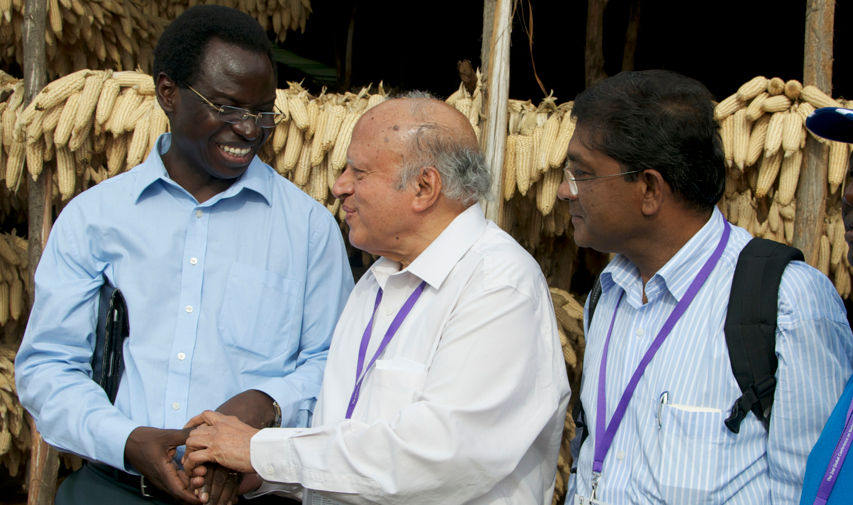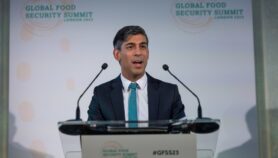09/10/23
Swaminathan: passing of a legend, voice of reason

By: Ranjit Devraj
Send to a friend
The details you provide on this page will not be used to send unsolicited email, and will not be sold to a 3rd party. See privacy policy.
Unsurprisingly, there was no shortage of tributes for M S Swaminathan, ‘Father of the Green Revolution,’ when he passed away peacefully at his residence in Chennai, India on 28 September, aged 98.
Using a mix of chemical and biological technology, Swaminathan famously succeeded in turning India from a “basket case” dependent on food aid during the 1960s to being a leader in the production of rice and wheat, the world’s two main staples.
A measure of that success was seen in July when India imposed restrictions on the export of rice, drawing concern from the International Monetary Fund’s chief economist, Pierre-Olivier Gourinchas, who warned that the move could trigger volatility in global food prices.
India’s position as a world leader in the production of grain is, unfortunately, serving as an advertisement for maximising the use of technology to massively increase food production without looking at the many drawbacks, that Swaminathan himself admitted to in later years.
Today, there is talk of a “Second Green Revolution” based on genetic modification and the use of even more chemical inputs — fertilisers, pesticides and herbicides — to further increase crop productivity, overlooking the real costs of Swaminathan’s comparatively benign methods that relied on the cross-breeding of hybrid plants.
Green Revolution – what costs?
In the so-called Green Revolution of the 1960s, farmers in India were compelled to abandon thousands of traditional varieties of rice and wheat and switch to a handful of new, high-yielding varieties causing immense damage to agricultural biodiversity. These monocultures became more susceptible to pests, compelling farmers to buy toxic chemical pesticides that they could ill afford.
India soon witnessed a strange paradox of overflowing granaries and impoverished farmers committing suicide in droves. According to the National Crime Records Bureau, an average of 5,000 farmers died each year by suicide between 2014 and 2020.

The late M.S. Swaminathan (centre) in the field. Photo Credit: Joslin Isaacson /HarvestPlus (CC BY-NC 2.0 DEED)
Swaminathan warned that the Green Revolution was not about improving the purchasing power of farmers, which called for politically difficult measures such as market regulation and better land redistribution. Often the farmers ended up unable to afford the very grain they had grown, having pledged the crops to money-lenders.
According to transnational food corporations and their supporters in the government, only higher technology involving transgenic crops can deliver farmers from poverty and increase food security.
GM debate
When Swaminathan pitched into the debate over transgenic crops by denouncing Bt cotton as a failure, he came in for flak from scientists, including K. VijayRaghavan, celebrated development biologist and former principal scientific adviser to the Indian government.
Bt cotton, Swaminathan wrote in a published article in 2018, “has failed as a sustainable agriculture technology and has, therefore, also failed to provide livelihood security for cotton farmers who are mainly resource-poor, small and marginal farmers”.
“The precautionary principle has been done away with and no science-based and rigorous biosafety protocols and evaluation of GM crops are in place,” Swaminathan wrote, adding credence to the arguments presented by environmentalists and food security activists in a case pending before the Supreme Court since 2004.
Recognising the limits of new technologies in boosting agricultural productivity, Swaminathan said none of them, including those he had himself employed in pursuit of the Green Revolution, has been truly sustainable, and had serious environmental and social impacts.
Swaminathan’s stand on GM crops flew in the face of those who suggested he was acting as an agent for corporate interests in driving the Green Revolution. He dared say out loud that the planting of GM crops destroyed soil micronutrients and depleted water resources, adding to the woes of India’s smallholder farmers already hard put to buy GM seeds at each replanting.
His own prescription was for an ‘Evergreen Revolution’ that combined eco-agriculture and green technology enterprises to put money in the hands of rural communities and ensure food availability. Hunger in India, he said boldly, was owing to a lack of purchasing power rather than any lack of food.
With Swaminathan gone there are no few powerful voices left to speak against the “second green revolution”, which is designed to facilitate the fully-fledged corporatisation of agriculture supported by the state and its research arm, the Indian Council of Agricultural Research (ICAR), now helping to develop 13 different GM crops, including rice and wheat.
Censorship
To make sure that ICAR scientists did not step out of line and oppose the plan to pursue GM crops, the government threatened last year to take action against ICAR officials who spoke out against GM mustard, which has been approved for environmental release but awaits a final verdict by the Supreme Court before commercial planting can begin.
That order, which effectively deprived science writers of credible scientific sources while reporting on the debate raging in the country over GM crops, was one that would never have met with approval from Swaminathan, concerned as he was for farmers and consumers.
“Scientific research is one of the most satisfying pursuits that can occupy the human mind,” he wrote in a foreword to a publication on science writing in Asia by the International Rice Research Institute, where he was director general from 1982 to 1988.
“But the personal excitement of discovery should not obscure the enormous public stake in the enterprise. It is only through public awareness that scientific pursuits may be assured of public support.
“The missing element in the popularisation of science in most of Asia is the science writer — usually a journalist, sometimes with a background in science — who can interpret the technical terms and concepts into an approachable piece of writing. Science writers are…almost non-existent in many developing countries. They need support.”
This piece was produced by SciDev.Net’s Asia & Pacific desk.













